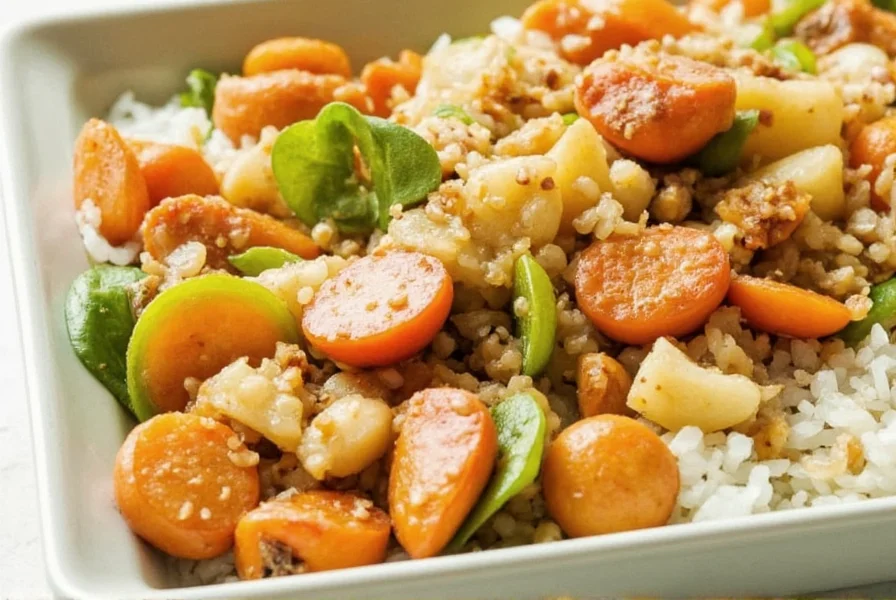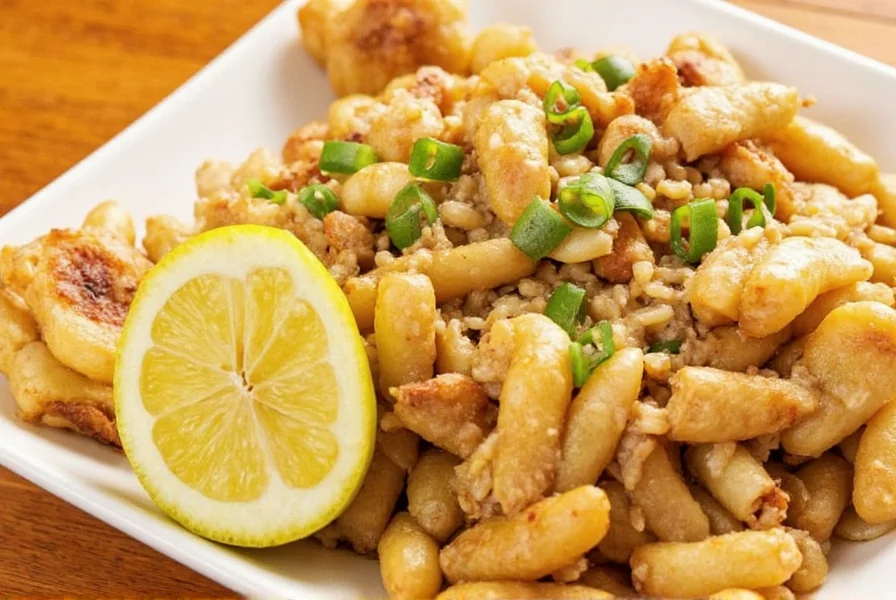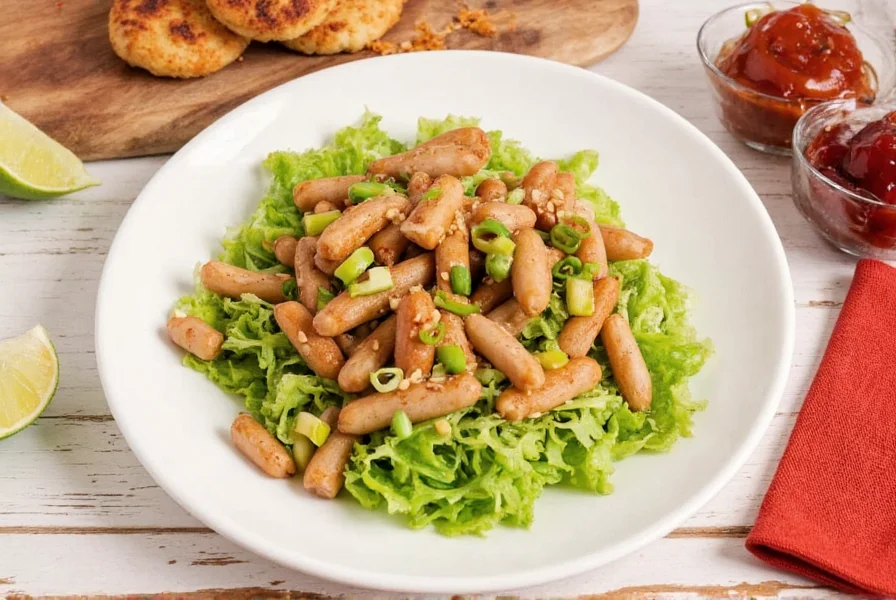Known for its distinctive spicy-sweet flavor and impressive health properties, ginger transforms ordinary dishes into extraordinary culinary experiences. Whether you're using fresh root, ground spice, or crystallized form, this rhizome adds depth and complexity to both savory and sweet creations. Chefs and home cooks alike value ginger for its ability to enhance flavors while providing anti-inflammatory and digestive benefits.
Why Ginger Elevates Your Cooking
Ginger contains gingerol, the bioactive compound responsible for its pungent taste and numerous health advantages. When incorporated into recipes, it doesn't just add flavor—it creates a complete sensory experience. Fresh ginger provides a bright, citrusy heat that mellow when cooked, while dried ginger offers a warmer, more concentrated spice profile. Understanding these differences helps you select the right form for your recipes that include ginger.

Top Ginger Recipe Categories
Ginger's versatility makes it suitable for nearly every course of a meal. These categories represent the most popular applications in home cooking and professional kitchens worldwide.
| Recipe Category | Preparation Time | Best Ginger Form | Popular Dishes |
|---|---|---|---|
| Asian Entrees | 20-40 minutes | Fresh grated | Ginger chicken, stir-fries, sushi ginger |
| Baked Goods | 45-90 minutes | Ground or crystallized | Gingerbread, snaps, molasses cookies |
| Beverages | 5-15 minutes | Fresh sliced or juiced | Ginger tea, lemonades, cocktails |
| Side Dishes | 15-30 minutes | Fresh minced | Ginger carrots, roasted vegetables, chutneys |
Three Essential Ginger Recipes to Try
1. Classic Ginger Chicken Stir-Fry
This easy ginger recipe for beginners combines tender chicken with crisp vegetables in a savory-sweet sauce. The fresh ginger provides the perfect aromatic base that defines authentic Asian cooking.
Ingredients:
- 1 lb chicken breast, thinly sliced
- 2 tbsp fresh ginger, finely grated
- 3 garlic cloves, minced
- 1 red bell pepper, sliced
- 1 cup broccoli florets
- 3 tbsp soy sauce
- 1 tbsp honey
- 1 tbsp rice vinegar
- 1 tsp sesame oil
- 2 tbsp vegetable oil
Instructions:
- Whisk together soy sauce, honey, rice vinegar, and sesame oil
- Heat vegetable oil in wok over high heat
- Add ginger and garlic, stir 30 seconds until fragrant
- Add chicken and cook until browned (5-6 minutes)
- Add vegetables and stir-fry 3-4 minutes
- Pour sauce over ingredients and cook 2 more minutes
- Serve immediately over steamed rice
2. Fresh Ginger Turmeric Immunity Shot
For those seeking healthy meals with fresh ginger, this simple beverage delivers powerful antioxidant benefits in just minutes. This recipe for immune support requires minimal ingredients but maximum flavor impact.
Ingredients:
- 1-inch fresh ginger root
- 1-inch fresh turmeric root
- 1 lemon, juiced
- 1 tsp raw honey (optional)
- 2 oz water
Instructions:
- Peel and roughly chop ginger and turmeric
- Combine all ingredients in high-speed blender
- Blend until completely smooth
- Strain through fine mesh sieve
- Store in glass bottle in refrigerator for up to 3 days
- Take 1-2 oz daily, preferably in the morning

3. Spiced Ginger Molasses Cookies
These traditional ginger recipes deliver the perfect balance of spicy and sweet. The combination of ground ginger with cinnamon, cloves, and black pepper creates complex flavor notes that deepen when baked.
Ingredients:
- 2 ¼ cups all-purpose flour
- 2 tsp ground ginger
- 1 ½ tsp cinnamon
- ¼ tsp black pepper
- ½ tsp cloves
- ½ tsp baking soda
- ½ cup unsalted butter, softened
- ½ cup brown sugar
- ¼ cup molasses
- 1 egg
- 2 tbsp sugar for rolling
Instructions:
- Whisk dry ingredients together in medium bowl
- Cream butter and brown sugar until light
- Mix in molasses and egg
- Gradually add dry ingredients to wet mixture
- Cover and refrigerate dough 2 hours
- Preheat oven to 350°F (175°C)
- Roll tablespoon-sized portions in sugar
- Bake 10-12 minutes until edges are firm
- Cool on wire rack before serving
Mastering Ginger in Your Kitchen
Select firm, smooth ginger roots with tight skin for the best flavor. Store unpeeled ginger in the refrigerator for up to three weeks or freeze for longer storage. When preparing fresh ginger, use a spoon to easily peel the thin skin without wasting the valuable flesh beneath. For maximum flavor release, grate ginger directly into hot dishes during the final minutes of cooking.
Understanding how to cook with fresh ginger root transforms your culinary creations. The younger the ginger, the juicier and less fibrous it will be—ideal for grating into sauces and dressings. Mature ginger develops more intense heat, perfect for robust dishes like curries and stews. When substituting ground for fresh ginger, use ¼ teaspoon ground for every 1-inch piece of fresh root.
Frequently Asked Questions
What are the health benefits of cooking with ginger?
Ginger contains gingerol, a bioactive compound with powerful anti-inflammatory and antioxidant properties. Regular consumption may help reduce muscle pain, improve digestion, alleviate nausea, and support immune function. Cooking with fresh ginger preserves more of these beneficial compounds compared to dried forms.
Can I substitute ground ginger for fresh in recipes?
Yes, but with adjustments. Use ¼ teaspoon ground ginger for every 1-inch piece of fresh ginger. Keep in mind that ground ginger has a warmer, more concentrated flavor while fresh ginger provides brighter, citrusy notes. For best results in recipes that include ginger, use fresh when possible for sauces and marinades, and ground for baked goods.
How do I store fresh ginger to keep it fresh longer?
Store unpeeled ginger root in the refrigerator's vegetable drawer for 2-3 weeks. For longer storage, place it in a sealed container with a paper towel to absorb moisture. You can also freeze whole ginger roots and grate directly from frozen when needed. Properly stored ginger maintains its flavor and potency for several months.
Which recipes work best with young versus mature ginger?
Young ginger (pale yellow with thin skin) works best in delicate dishes like salads, dressings, and beverages where its mild, juicy flavor shines. Mature ginger (thicker, brownish skin) has more intense heat and fiber, making it ideal for robust recipes like curries, stir-fries, and baked goods where its stronger flavor can stand up to other ingredients.
How can I reduce the strong taste of ginger in a dish?
If your ginger-infused recipe becomes too spicy, balance it with sweetness (honey or sugar), acidity (lemon juice or vinegar), or dairy (coconut milk or yogurt). Adding these elements gradually while tasting will help mellow the ginger's intensity without compromising the dish's integrity. For future reference, start with less ginger and build up to your preferred flavor level.











 浙公网安备
33010002000092号
浙公网安备
33010002000092号 浙B2-20120091-4
浙B2-20120091-4